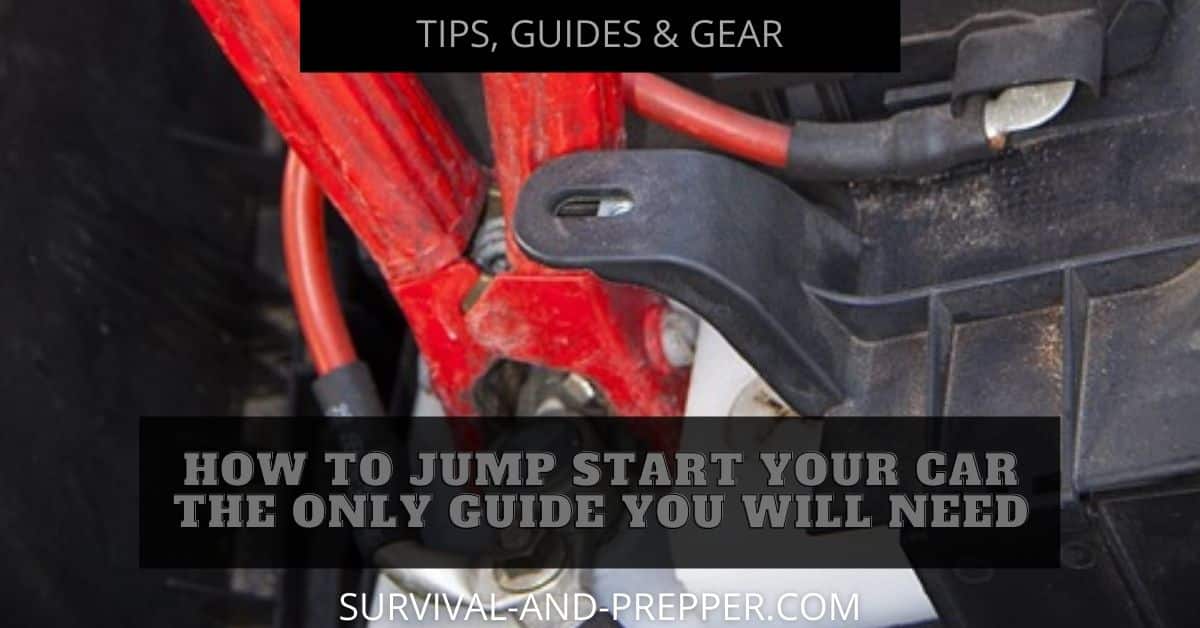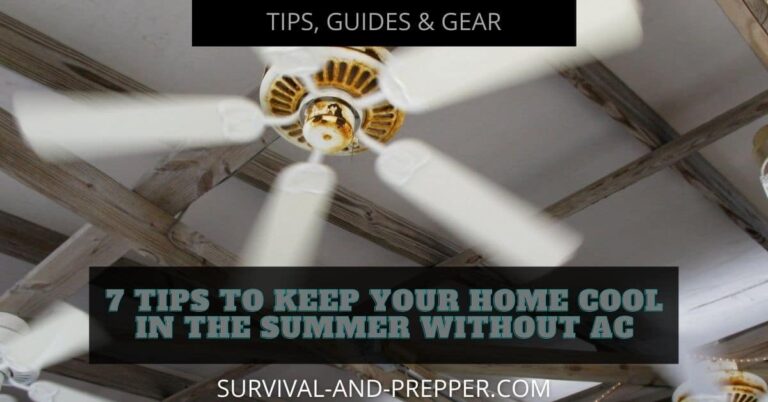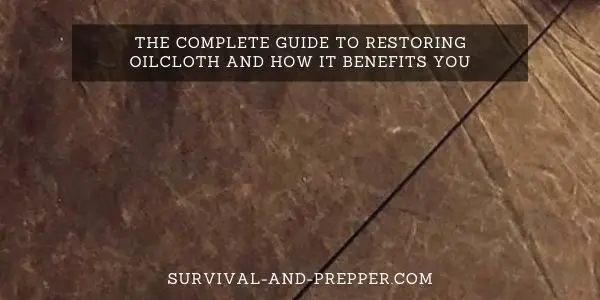How to Jump Start Your Car – The Only Guide You Will Need
There are many things that could cause the battery in your car to die. These range from a door being left open to changes in the weather. Regardless of the reason your vehicle now has a dead battery and we need to correct that. This guide will teach you several key steps to jump start your car.
In the past these skills were frequently taught to boys by their fathers. However, in today’s age it is just as important for women to learn this skill as well. I will provide tips for three methods that you can use to jump start your car. These include first text instructions and finally a video. Hopefully by the end you will feel comfortable in your ability to Jump start Your Car.
The Tools You Will Need
Option A – Jump Start a Car With Cables
- Car with a dead battery
- Car that runs with a good battery
- Jumper cables
Option B – Jump Start Your Car With a Jump Box
- Car with a dead battery
- Jump Box
Option C – Jump Start Your Car By Popping The Clutch
- Car with a dead battery and a standard/manual transmission
- A slight downhill or smooth surface to roll the vehicle
The Steps – Start With Confirming The Battery Is The Issue
Attempt to start your car. The sound provided will help you determine if it is possibly the battery or another issue. If you hear the engine spinning but not starting then the battery is not the problem. If you turn the key and hear either a loud click and nothing else or nothing happens then it is possible that the battery is the culprit. In this case, there is a good chance that jumping your battery off will take care of the problem.
One Thing To Note
There are several causes of a dead battery. It is important to separate these into those events which happen while the vehicle is parked and those that occur while the vehicle is in motion.
When a vehicle is parked the battery drain is normally caused by a light being left on, a door open, headlights or the radio being listened to. Sometimes it is caused by a cell in the battery going bad or extreme temperatures causing damage to the battery. In each of these instances jumping the vehicle off will usually suffice to correct the problem or atleast get you to a location where the battery can be replaced.
When the issue arises while the vehicle is in motion the situation quickly becomes more complicated. In these instances it is often caused not by a battery issue but more frequently an alternator issue. In many cases, a vehicle can continue running once it is started even if you remove the battery. This is due to the fact that the vehicle only uses the battery to start. The rest of the time the needed power is provided by the alternator. If you are driving down the road and notice your lights dimming or the radio acting up and then the car shuts off it is likely there is an issue with the alternator.
In the instance of an alternator issue jumping the vehicle off will only allow the vehicle to run for a very short time. If this event occurred you need to make every effort to get the vehicle out of the roadway and into a safe parking location as quickly as possible.
Option 1 – Jump Starting With Cables
This is the most common type of jumpstarting a vehicle unless you work for a location that has a fleet of vehicles. Many people carry a set of jumper cables in their vehicles and would be willing to help you if you need. I seem to have found better luck in those rare instances I found myself out in public with a dead battery, by asking older males and people who own trucks for their assistance.
The Steps are as Follows
1. Switch the ignition of both cars off
Switching both vehicles off will help to avoid sparks that often occur when connecting jumper cables. While these sparks are generally insufficient to cause injuries they could ignite hydrogen gas that is released from a battery discharging.
2. Determine the positive and negative terminals and cables
Batteries on vehicles are commonly marked with a + and -. The + being positive and the – being negative. Jumper cables are often tipped by red and black clamps, they may also have two colors for the cables. This is not always the case though and you may see cables that are yellow and black or even both black with one cable having a white line on it. Examine your cables and determine which one you are going to use as the positive cable. One other consideration if you are purchasing jumper cables is wire diameter. 4 or 6 Gauge wire is your best choice, you may find the cheap 10 gauge wires cables to be insufficient.
3. Connect one of the jumper cable positive leads to the positive terminal on the good battery
Ensure that the ends of the cable are not touching each other. Then start by connecting the positive lead to the working vehicle’s positive battery. I suggest starting here as the working vehicle was just running to be moved into position and there is possibly some hydrogen gas around the battery area. By starting with that terminal first there is less chance of a spark.
4. Connect the other jumper cable positive lead to the stalled vehicle’s positive terminal
Verify again that the negative cables are not touching anything, then connect the other positive lead to the non-working vehicle’s positive terminal.
5. Verify that the negative cables are not in a position where they touch any metal on either vehicle
This step is important since any metal can conduct if a circuit is completed. If you were to touch the negative cable to the good vehicle battery while the other end was touching metal sparks could result. These sparks could result in damage to paint or other surfaces if not careful. Make sure both ends of the cable are not touching anything.
6. Connect one of the negative leads to the negative post on the vehicle with a good battery
Connect one of the negative leads to the negative post on the good vehicle. This is due to the fact that we want the maximum transfer of amperage to the other vehicle so a direct connection is ideal here.
7. Connect the last lead of the negative cable to a piece of metal on the engine of the vehicle with the bad battery (do not connect it to the negative post in this vehicle)
At this time you are about to make the final connection. You never want to connect this final cable end directly to the battery. Doing so could result in sparks that could cause ignition of hydrogen gases. Instead find a bolt or bracket under the hood to connect the negative lead to. Even though you have the vehicle turned off some slight sparking may occur. This could be from lights in the vehicle being on or the fuel pump coming on to prime the fuel system. These sparks are harmless in nature as long as they are kept away from the battery.
8. Start the engine on the vehicle with a good battery and allow to run for several minutes
Start the vehicle with the good battery. Depending on how dead your other vehicles’ battery was you may need to allow the good vehicle to run for a few minutes. This allows the alternator time to partially charge the dead battery. However, if your battery was not completely dead or the working vehicle has a high amperage system then you may not have to wait.
9. Start the vehicle with the dead battery.
When you get ready to start the vehicle with the dead battery, make sure the headlights are not set to auto. Make sure all doors are closed, the radio is off and the air condition is also off. These steps allow your engine to use all the available electricity. Turn the key to the run position and wait a few seconds. This will allow your fuel system to prime if necessary. After that attempt to start your vehicle. If it does not start and instead clicks, you need to check the jumper cables.
You can check them to make sure they’re connected visually, sometimes it is necessary to twist them side to side slightly to break the surface of the paint or grime that is covering the surfaces of the terminals or the metal you connected to on the engine.
Once the vehicle starts, leave it running.
10. Remove the cables starting with the last lead you put on
In order to remove the cables, reverse the steps you took to put them on. This will help to ensure that you don’t accidentally cause any sparking by removing them too fast and letting them touch.
Warning – If you accidentally connect the positive and negative terminals in the wrong manner you could cause a 24 volt connection. In this case, the amperage would be high enough to melt metal and the cables could fuse to the terminals. Please make sure the cables are on the appropriate posts before connecting the last negative cable to the piece of metal in the engine compartment.
Option 2 – Using A Jumpbox

A jump box is a much better option to jump start your car. However, oftentimes one is not available and they do cost a bit more. A jump box has several built in features that make them much safer and in some cases more efficient as an emergency aid device. For instance they often have a work light installed in them, can jump your vehicle off and some models even include air compressors that will allow you to take care of a flat tire.
The Steps For a Jump Box Are
1. Switch the ignition off
Just like in the previous example you want to start with the ignition in the off position. This ensures that no energy still remaining in the battery is released and minimizes chances of a spark. It also helps to ensure no fans etc that may be under the hood start when power is applied to the battery.
2. Connect the positive cable lead from the jump box to the positive terminal
Jump Boxes normally have very clear labeling as to which cable is positive and negative. They are nearly always exclusively red and black to minimize confusion. At this time connect the red positive cable to the positive + terminal on the battery.
3. Connect the negative cable lead from the jump box to the negative terminal
Due to the safety features of a jump box and the fact that they do not apply power until activated it is safe to connect the black negative cable directly to the negative – post of the battery.
4. Activate the Jump box and then start the vehicle
At this point, you can activate the jump box. Many have a voltage meter and should quickly tell you if you have greater than 12 volts. Now that the box is activated prepare to start your vehicle. Make sure the headlights, fans and radio are all turned off. Then try to start the vehicle. If it clicks double check your cable connections.
5. Allow the jump box and vehicle to remain connected for several minutes
Once the vehicle starts it is not as necessary to leave the jump box connected for an extended time. In the case of jumping the vehicle off with cables the second vehicle’s alternator continues to produce power. A jump box on the other hand is essentially a large battery and only holds so much energy stored. So once your vehicle is running and the power has equaled that of the jump box it no longer helps to keep them connected.
Option 3 – Popping The Clutch To Start A Manual Transmission Vehicle
When dealing with a vehicle that has a manual or standard transmission you have a third option to start jump start your car. You can “pop” the clutch. Essentially this relies on the way the engine, transmission and drive lines are connected. By “popping” or engaging the clutch while the vehicle is rolling it forces the drive train to spin the ignition which will result in ignition in most cases. In order for this to work the vehicle must have a manual transmission and you have to have a way to get the vehicle to move. This can be by rolling down a driveway or hill or by being pushed.
The Steps To Start A Vehicle By Popping The Clutch
1. Put your foot on the brake
Since this method involves the vehicle rolling you want to make sure that it does not begin to do so before you are ready.
2. Turn the ignition to run
In this instance, you want the ignition switched to run. This will allow the fuel pump and electrical systems to function properly.
3.Press the clutch to the floor
You are going to push the clutch to the floor which disengages it from the transmission. This allows you to both put the transmission in gear and allows the transmission to spin free of the engine.
4. Place the vehicle in 1st gear
For smaller vehicles 1st gear is your best choice. Sometimes though you may find that 2nd gear works better. This is due to the fact that the gear ratio in the transmission forces the engine to turn faster.
5. Allow the vehicle to begin rolling
Now allow the vehicle to begin rolling. This can be done by simply releasing the brake and rolling down hill or by being pushed either by another person or even a vehicle in some cases.
6. Once the vehicle has traveled ten or so feet quickly release the clutch
If rolling down hill then you want to wait until you have reached a speed of 5 to 7 mph then release the clutch. If being pushed by a person then you can try after about ten feet of movement. Just a note this will cause your vehicle to suddenly slow down or stop. Keep that in mind if you are being pushed and relay that info to the people pushing your vehicle.
7. If the engine does not start push the clutch down and release it quickly a second time
Sometimes it does not start on the first try, this could be due to a lack of fuel priming or insufficient speed. Quickly press the clutch in and try again while still rolling. Hopefully, it will start on the second attempt.
8. This should start the vehicle, if it does then allow the vehicle to continue running for at least half an hour.
Once the vehicle starts you want to make sure it runs for at least a half hour or so. It is important to note as well that many alternators charge better at higher engine RPM. So the battery will charge better if the vehicle is driven around. I suggest a quick trip to the part store during this time. They have testers that can confirm if the dead battery was an isolated incident or due to the battery starting to fail.
The Realities
While this guide did contain several warnings and the discussion of hydrogen exploding or electric sparks may scare you if you follow the steps listed here learning to jump start your car is a relatively simple process.
Using these same steps my 11 year old son is capable of safely performing this task. After learning these steps he has been able to help his mother jump off other motorists on two different occasions. You can only imagine the pride that gives him in being able to help someone else.
Are You Really a Prepper at Heart?
Many people think that preppers are somewhat crazy nut jobs. However, this opinion was likely influenced by recent media outlets and television shows such as Doomsday Preppers.
A prepper is really just a person who prepares for the future.
Those preparations can be something as simple as having a set of jumper cables in your car or spare firewood for the winter. While your here why don’t you check out some of our other articles.
You should also sign up for our newsletter to receive the latest posts and exclusive discounts to our affiliate partners.








Hmm it looks like your blog ate my first comment (it was extremely long) so I guess
I’ll just sum it up what I wrote and say, I’m thoroughly
enjoying your blog. I too am an aspiring blog blogger but I’m still new to everything.
Do you have any helpful hints for beginner blog writers?
I’d really appreciate it.
I am new as well, figuring it out as I go. All I can say is make sure to find a topic that interests you. Spend as much time reading other blogs as you do yours. Try and read the articles hitting page 1 of google to see the style they use. Never copy others content as it hurts your reputation.
I’m amazed, I must say. Rarely do I encounter a blog that’s both educative and engaging, and let me tell you, you have
hit the nail on the head. The problem is an issue that too few folks are speaking intelligently
about. I am very happy that I found this in my search
for something regarding this.
Thank you a lot for sharing this wіtһ all people you
actually սndеrstand what yߋu’rе speaking about!
Bookmarked.